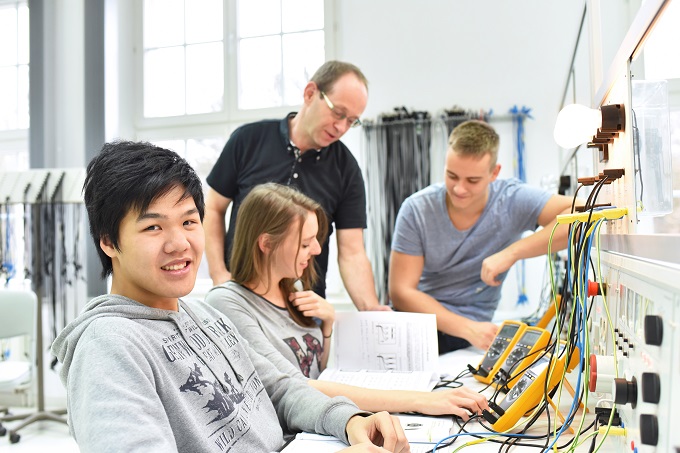
The BUSY school will connect young people with vocational opportunities.© industrieblick - stock.adobe.com
Chris Hipkins was visiting NZIST’s MIT subsidiary in South Auckland with Prime Minister Jacinda Ardern, Finance Minister Grant Robertson and Minister for Building and Construction Jenny Salesa to meet classes of Trades Academy students who attend local high schools.
“It’s encouraging to see so many young people interested in trades training. Trades Academy is a great pathway into higher level trades training and apprenticeships,” Chris Hipkins said.
“It’s critical we have strong numbers of skilled people to help drive our recovery from COVID-19. We can’t afford the same mistake the previous National Government made after the GFC when it failed to invest in education and firms and resulted in a major skills shortage that we’re still trying to recover from.
“Despite just coming out of level 3 lockdown, in MIT alone we’re seeing Semester 2 enrolments for trades and engineering courses increasing by 59% on the previous year as workers displaced from the economy upskill and retrain.
“The Government is making targeted trades training and apprenticeships free for all learners, contributing to a major uptake in trades programmes.
“We are also supporting employers, with more than 1,900 firms signing up to the Apprenticeship Boost scheme which provides businesses up to $16,000 per first and second year apprentice.
“NZIST subsidiary UCOL in Palmerston North has seen a 37% growth in July and August enrolments compared with the same period last year, while Weltec has seen a more than 20% increase in its enrolment for construction and engineering courses. EIT is also reporting a 22% increase in enrolments for its free targeted trades training programmes including horticulture, electrical engineering and carpentry courses.
“According to BCITO, the number of apprentices signed up during July and August this year compared to last year has gone up from 1,436 in 2019 to 3,860 in 2020 – that’s an increase of 169%. Primary ITO also reports that 313 more apprentices signed up this year compared to the same period in 2019 – an increase of 105%.
“Having these skilled people will help the primary sector continue to perform strongly and provide the workforce needed to carry out the Government’s investment of $2.4 billion in 162 shovel ready projects as part of the COVID-19 Response and Recovery Fund (CRRF),” Chris Hipkins said.
The government’s latest step to attract more people in vocational education has also been launched with confirmation of the two groups selected to be the first of the Centres of Vocational Excellence (CoVE) – in construction and primary sectors.
The CoVEs are geographically-distributed groups that are a new type of partnership between the vocational education system and the two sectors.
“The Centres will drive innovation, strengthen links with industry and build resilience in a COVID-19 environment,” Chris Hipkins said.
“The Primary Sector CoVE and the Construction CoVE are industry and education-led. They bring together industry, researchers, tertiary providers, iwi, and other groups from across the country to work on the specific issues and opportunities each sector has identified, and develop solutions for training and education.
“The construction and primary sectors were chosen as the pilot CoVEs in response to the skills shortage and rapid technological changes happening in these sectors.”
Each of the CoVEs will be hosted at a campus of the New Zealand Institute of Skills and Technology (NZIST). The Food and Fibre CoVE will be hosted by the Eastern Institute of Technology, and the Construction CoVE (ConCoVE) will be hosted at the Manukau Institute of Technology.
“Both sectors are crucial to helping New Zealand’s recovery from COVID-19,” Chris Hipkins.
Educators and politicians are trying to address the current teaching shortage through different policy settings.…
Melanie Webber was the president of the secondary school union PPTA Te Wehengarua from 2021…
Wait times for paediatric care is having an impact on young people’s education and the…
Home of the brave, land of the free… except when it comes to books for…
Could a gender achievement gap in maths be due to confidence? Sarah Buckley from the…
The much-delayed English draft curriculum is now out for consultation, generating discussion from teachers.
This website uses cookies.